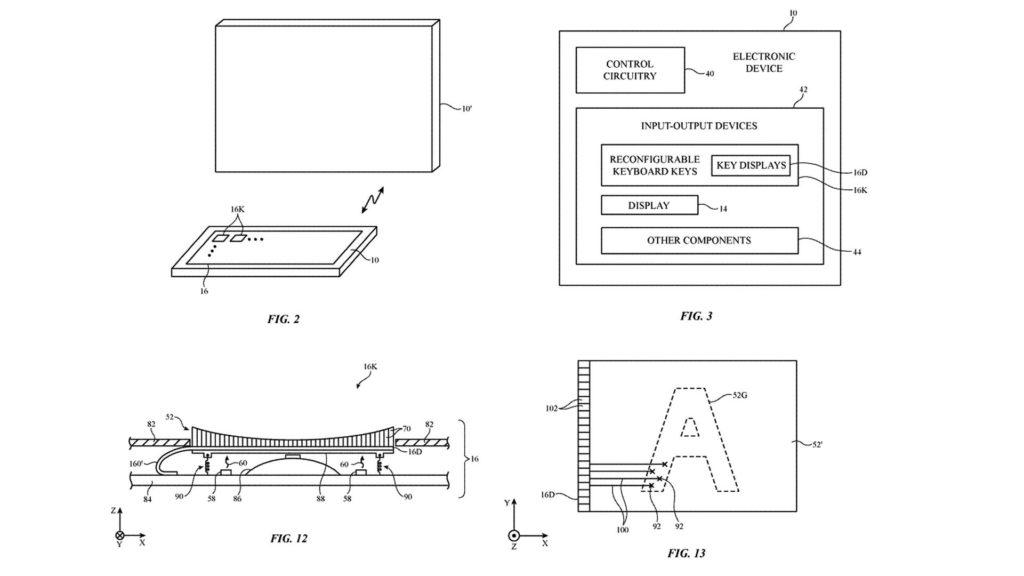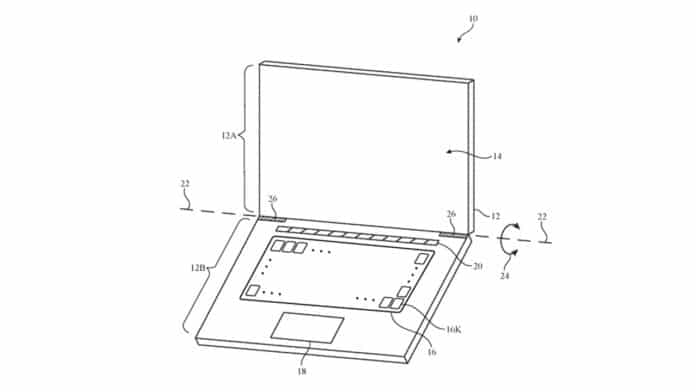In a patent filing under the U.S. Patent and Trademark Office filing deadline for 2020, Apple describes a keyboard with dynamically changing key functions. The keyboard’s keys would adapt to the job needing to be done.
The standard alphanumeric layout, for example, could be changed into a task-specific display in which keys could rather be utilized to execute functions. Audio recordings devotees could convert their keys into triggers that change volume, speed, and different embellishments. Photo editing programs could allocate tools to singular keys and multi-key combinations.
The dynamic labels indicate modifiable key functions. These labels are generated using dynamically reconfigurable labels displaying components such as organic light-emitting diode displays with arrays of pixels, electrophoretic displays with arrays of pixels, or other pixel arrays.
Right now, users can insert silicon placemats on their keyboards, demonstrating specialized software functions utilizing key combinations. In any case, some complain that the mats create an unnatural feel when typing: they need to press harder on the keys and that they can’t type as fast with the covers.
Apple’s proposed dynamic keys will provide visual, and possibly tactile, feedback without diminishing the normal typing experience.
The dynamic keys may be used not only with various work tasks but with games as well. The customizable keyboards would instantly adjust to the required properties of each game.

Another fascinating feature includes that it allows users to swap keyboard languages from English to other language.
As mentioned in the patentlyapple.com, the keys could be composed of glass, ceramic, polymer, or sapphire.
The patent was filed under the oddly worded label: “Electronic devices having keys with coherent fiber bundles.”
